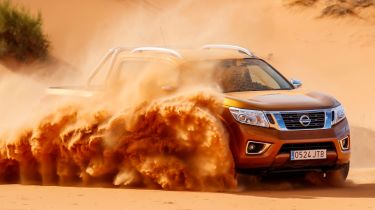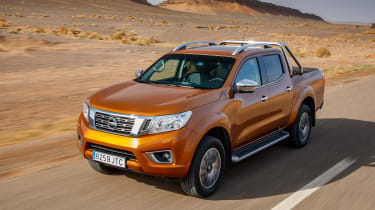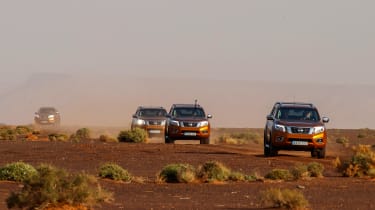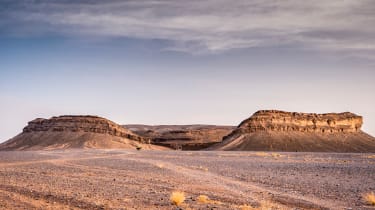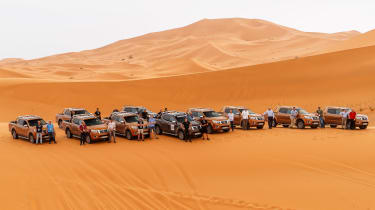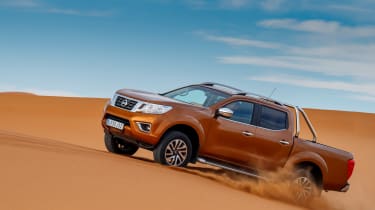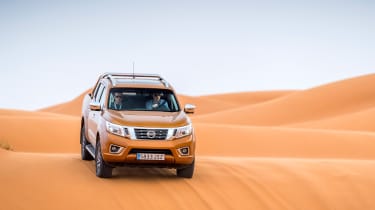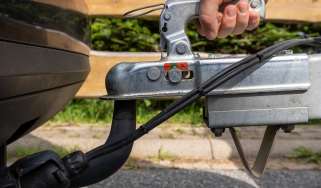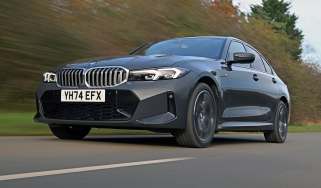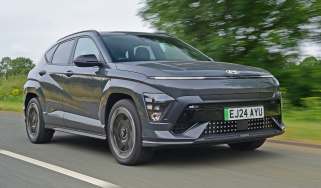Nissan Navara in the Sahara: extreme off-roading in the sand dunes
We thrash the Nissan Navara pick-up in Morocco to see if trucks are still as tough as they used to be
Are pick-ups are going soft? Thanks to brands making their trucks more like cars in recent years, you might think that these vehicles are losing their tough, workhorse edge. But what's the truth?
We ventured out to eastern Morocco to thrash the Nissan Navara pick-up in a range of different environments including rutted tracks in the wilderness, busy town streets and muddy savannah. The Navara's biggest test, though, was several hours of sand dune driving at Erg Chebbi in the Moroccan Sahara desert. If there were ever a location that could break a modern-day pick-up softie, it would be here.
Signs that the Navara has become more car-like in its latest guise aren't hard to spot. If you ignore the load bay at the rear, you could mistake it for an SUV; the front end looks muscular with its overblown wheelarches and grille, there are LED daytime running lights and creases in bonnet and along the doors.
The interior is even more of a giveaway. The dashboard has a very close resemblance to that of the brand's SUVs like the Qashqai and X-Trail. There's black gloss plastic and leather on the centre storage bin. You can even get creature comforts like satellite navigation, a 360-degree camera with parking sensors and a starter button.
We'd normally praise manufacturers for making pick-ups like these more user-friendly and a more attractive option for more UK buyers, but this type of car has to endure much more than a usual family hatchback over its lifetime. Has Nissan taken its eye off the ball?
The Navara is also quite novel among its pick-up rivals, as it’s platform is one of very few in Europe that utilises multi-link rear suspension – provided you get the four-door Double Cab version. Christian Meola, Head of Product Planning at Nissan says that the 5-link rear suspension on the Navara performs "even better at higher speeds" and claims that the setup "means that the car is more stable and predictable, meaning better handling." That in itself is quite car-like, but "car-like" doesn't really translate into "will withstand the test of time", does it?
Off road in the Nissan Navara
Our mega durability test started off by driving south from the town of Erfoud, near the contentious border with Algeria. We drove past an imposing army base, a couple of police checkpoints and a military convoy has we headed towards the Saharan wilderness. Our first experience of off-roading came in the shape of some rocky tracks through beautiful savannah flatlands, as large mountain steppes, dry riverbeds and acacia trees passed us by.
It was as if we were driving on the surface of Mars, with only sparse vegetation thrown in. We were purposely punishing with our Navara test car, so continued at a steady pace despite others braking for severe dips and larger potholes. Despite this, the truck didn't break a sweat.
The route we took led us to Gara Medouar – a huge horseshoe-like rock formation that slopes towards the centre. It has been used as a film location for quite a few blockbuster movies including The Mummy, Prince of Persia: Sands of Time and most recently, James Bond’s Spectre.
We climbed to the outer rim via a craggy track, as the pick-up’s beefy tires scrabbled for grip. There was real risk involved, as the track became slimmer the higher we got and the drop on one side grew steadily more intimidating. The end result of one wrong steering input in our Savannah Yellow Navara would have been unlikely to buff-out.
After stopping to admire the view, we pointed our Navara in the direction of the dunes. The route along the way became dryer and dustier; two substantial hints as to what lay ahead. The terrain flattened out, too, which meant we could stretch the Navara’s legs a little more before its big test.
Driving the dunes
As we meandered around small sand hills, we arrived at Erg Chebbi: a mass of sand dunes reaching heights of around 150 metres or 492 ft tall that has featured on Paris-Dakar raids.
• Nissan Navara vs Mitsubishi L200 vs Isuzu D-Max
We were called in to a safety briefing with Ramón Vila, who has had experience with the Paris-Dakar rally with Nissan during the early 2000's, who talked us through the best way to tackle the sea of sand that lay ahead of us. The technique is to accelerate hard going down the dunes and slowly lift off the throttle as you reach the summit of the next one.
The instructors and crew also spoke many times of having a “happy engine”, and we were was asked to keep the revs up between 2,500 and 3,500 rpm for maximum effectiveness when blasting uphill on a dune.
When it came to putting that guidance into practice, however, it’s harder than you think. You’re essentially driving up and down slopes with 25%+ gradients in terrain that’s similar to thick powder snow. There is real substance to the dunes beneath the tyres, but surface grip is very limited when you're on the move. Making steering inputs seems largely useless as the wheels to scrabble for traction. There's very little reaction from the front wheels until it's too late and if you don’t carry enough speed, before you get to the crest of the dune, you stop, dig yourself in and get stuck.
Still though, after a few practice runs, we got the hang of it. The tactic is to floor the throttle and keep your conviction as you speed down and then up the inclines. After a few practice runs, the Navara came into its own; it danced around the dunes like a vehicle half its weight and had enough punch to get over even the steepest sand mountains in the area.
• Nissan Navara long-term test
When done right, dune driving is confidence inspiring, but the advice is to not get cocky. If you get too aggressive and crest a dune at an odd angle, you'll end up having the heart-racing experience of a Navara tipping precariously to one side and lifting a rear wheel in protest. Thankfully, that's as bad as it got.
In the end, the Navara took on the Sahara sand dunes and came out the other end unscathed. Out of the whole convoy of around 18 trucks, only one suffered superficial damage, and that was more down to oversealous driving than anything else. Even after the dune trip, when the convoy made its way back onto the smooth country roads, the Navara showed no signs of stress.
The test was to prove that modern-day pick-up trucks hadn’t gone soft on us. We can safely say that even though it has become more comfortable, more tech-laden and more accessible to more people, the Nissan Navara can still take on the roughest terrain and win. Long live the pick-up.
Is driving through the Sahara on your bucket list? Have you done it before? Leave us a comment below!
